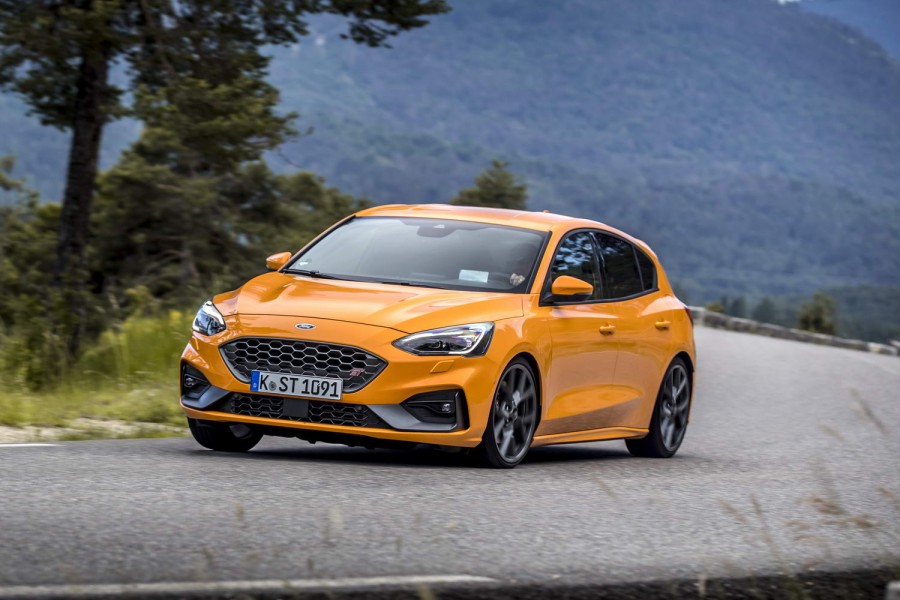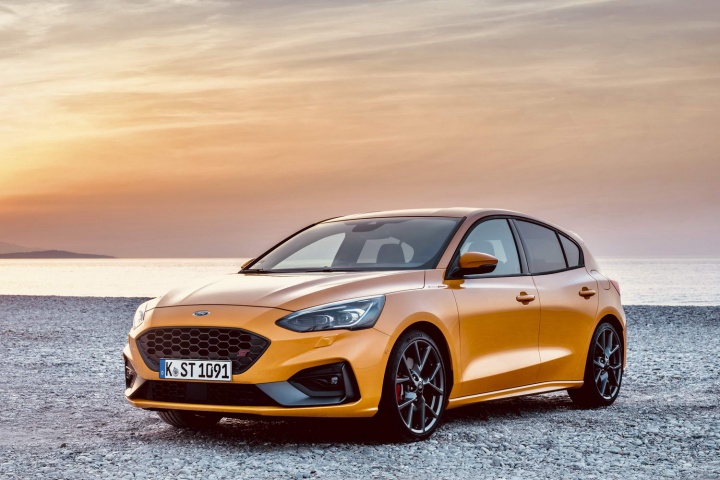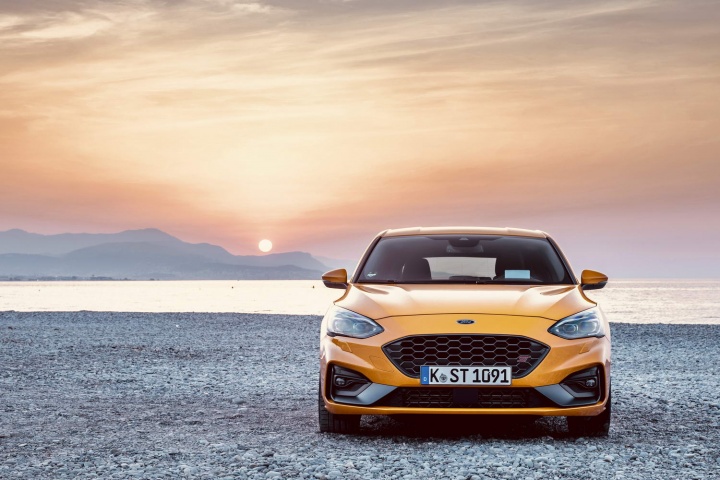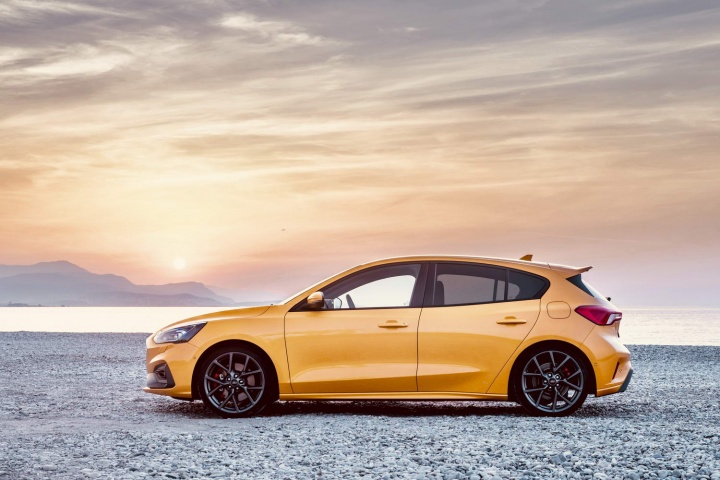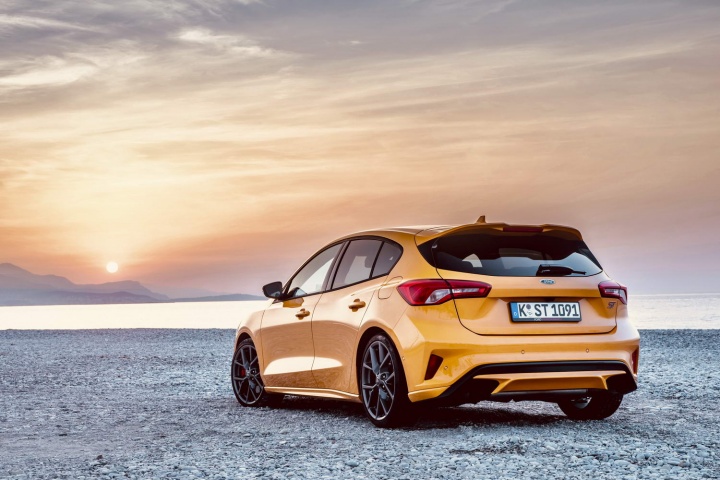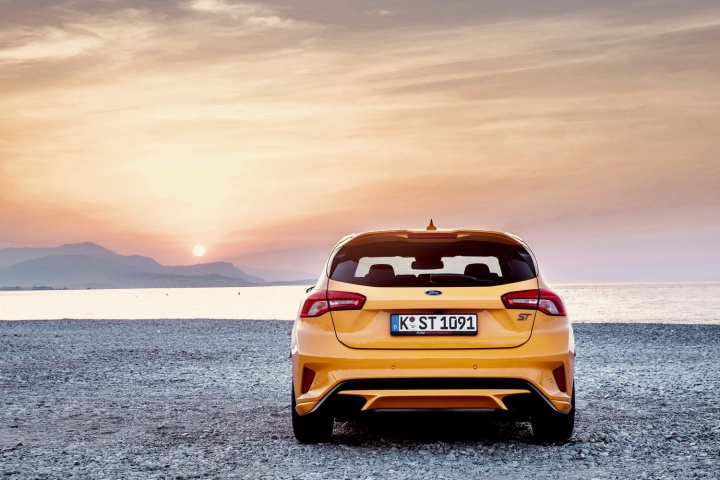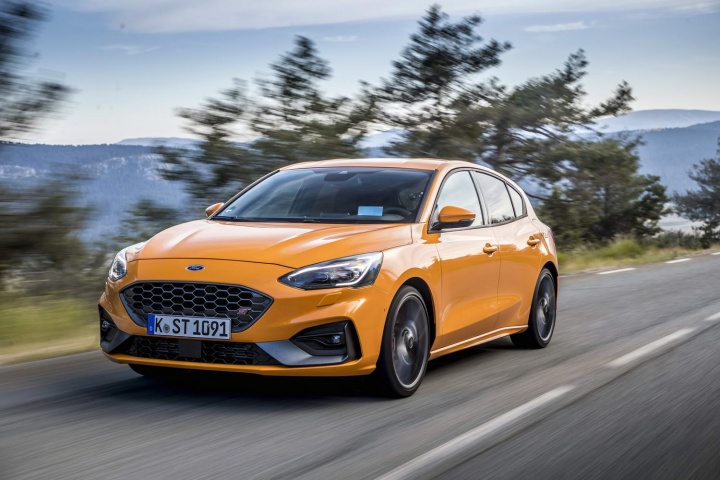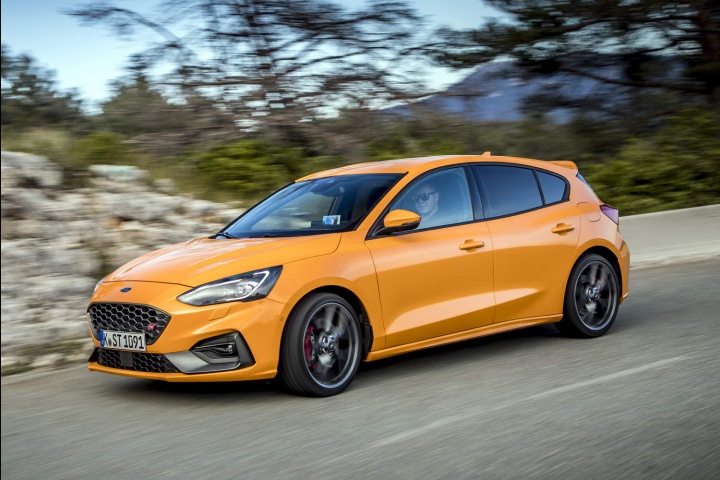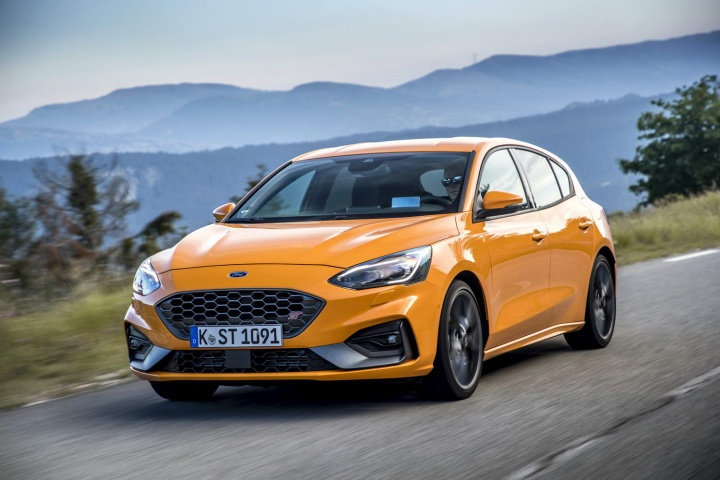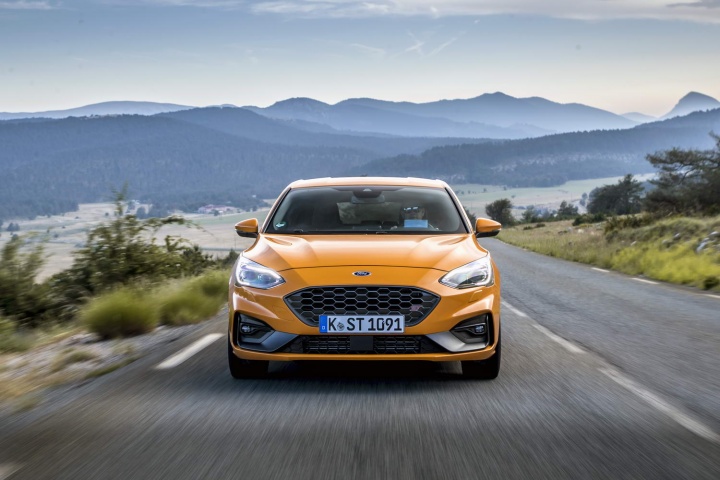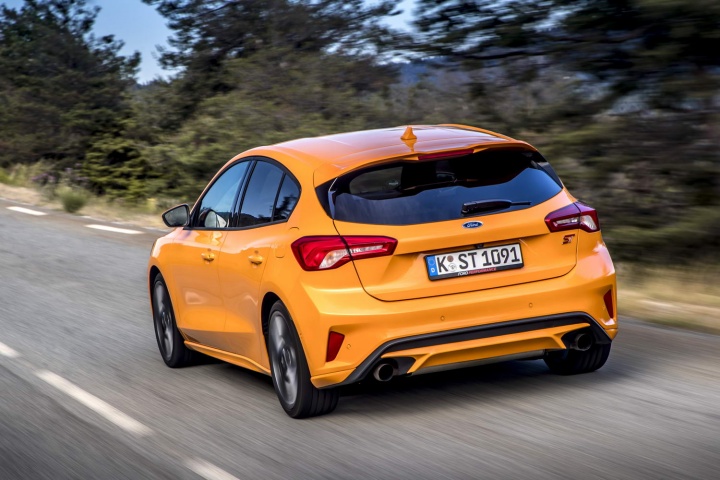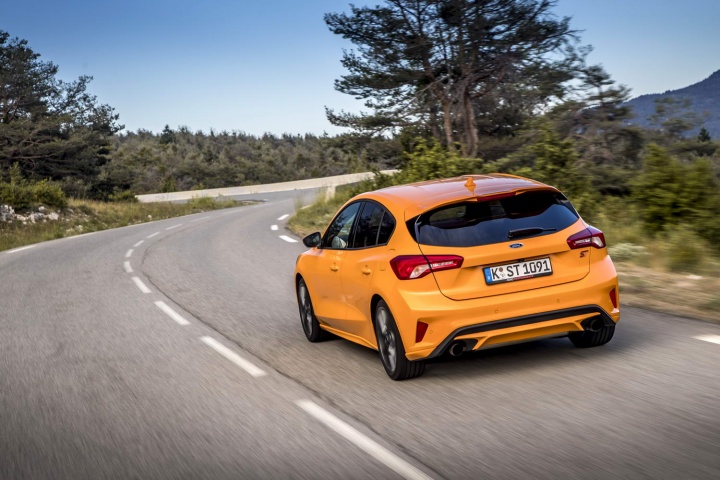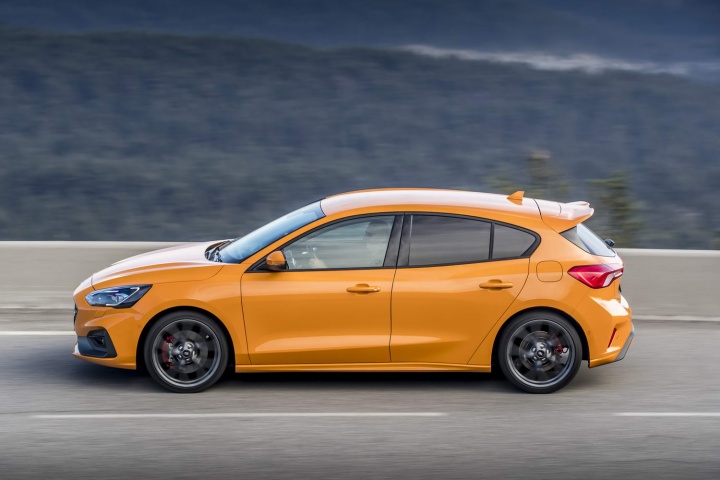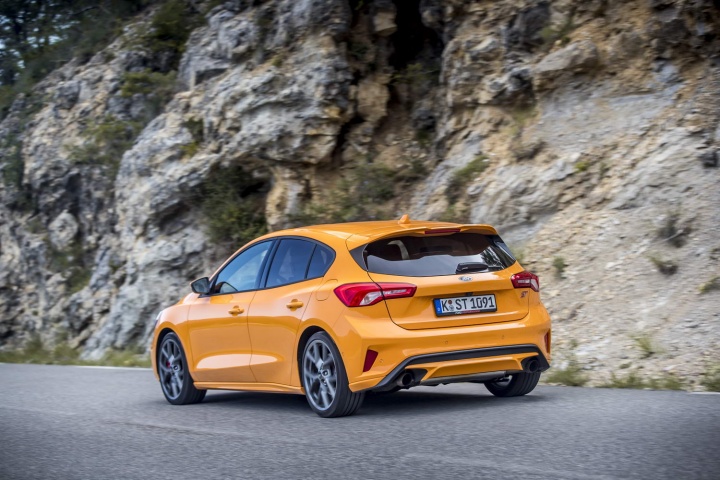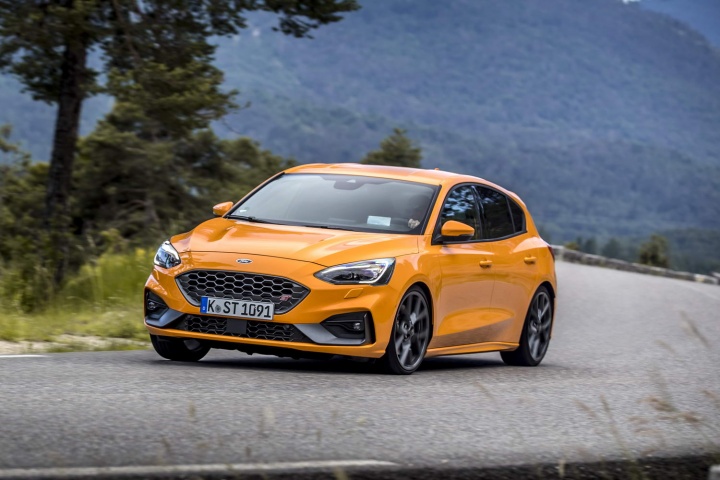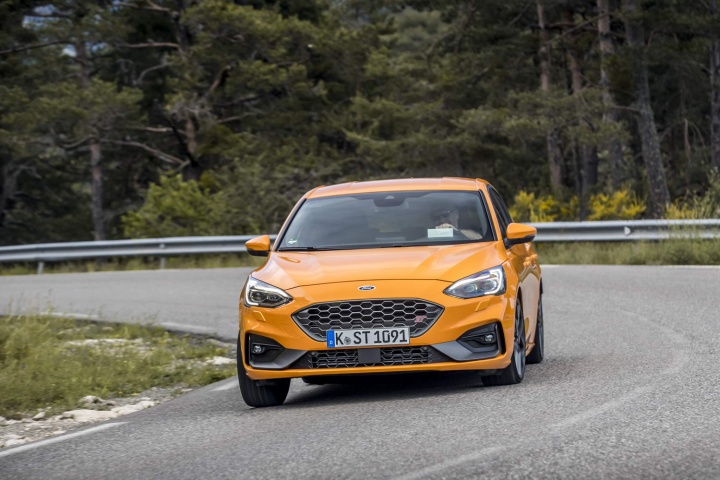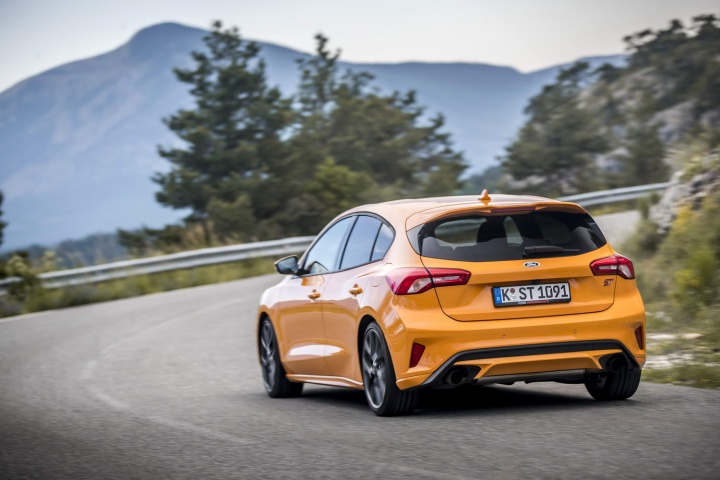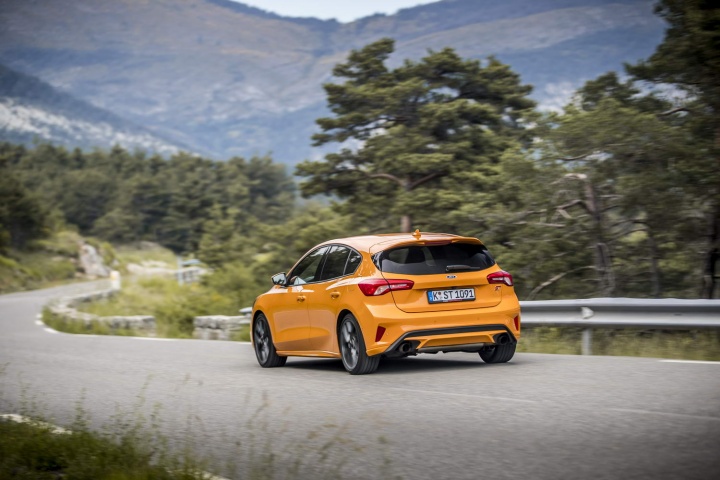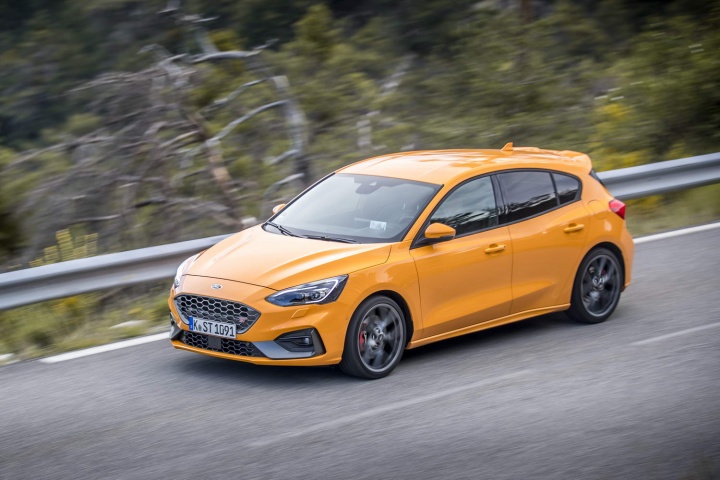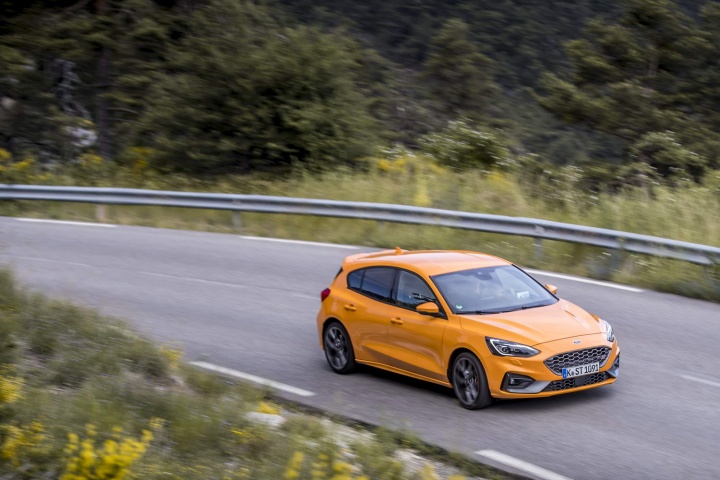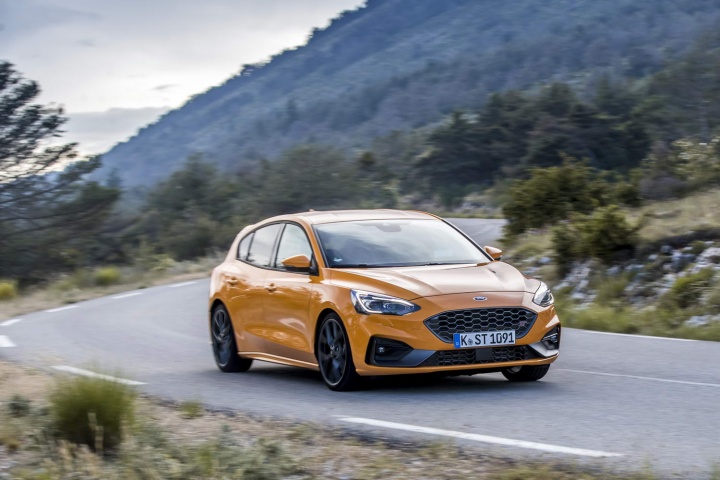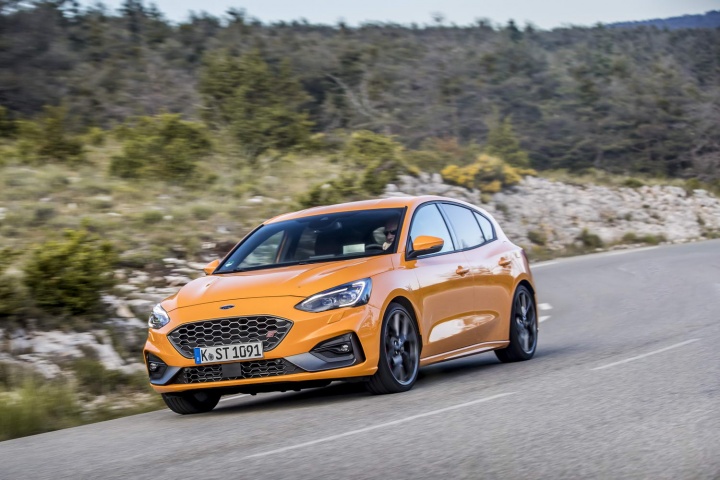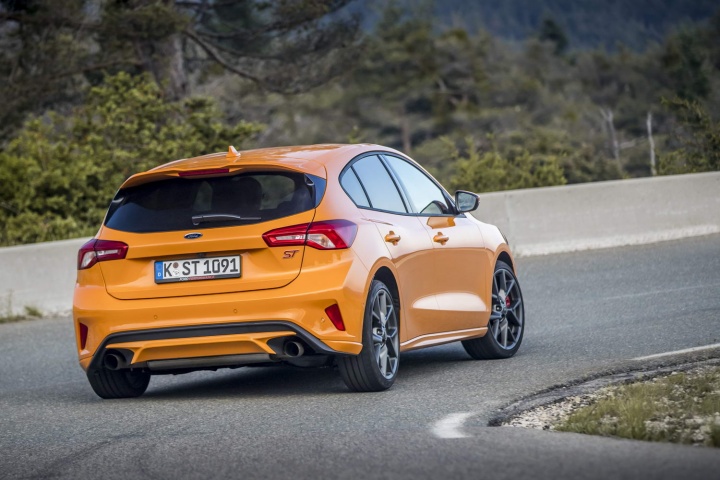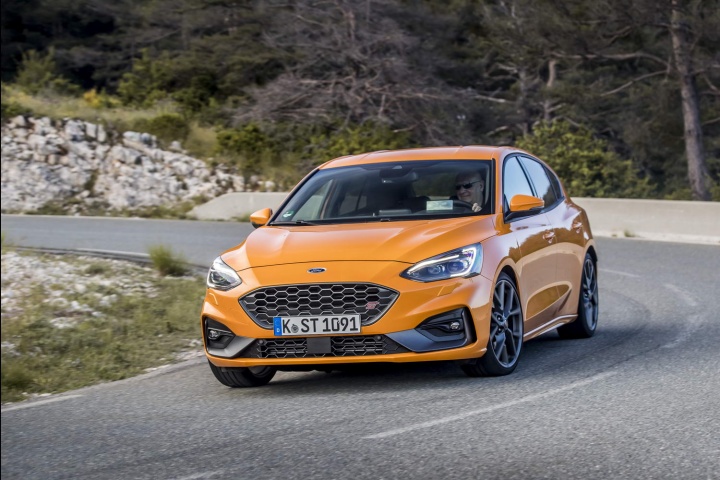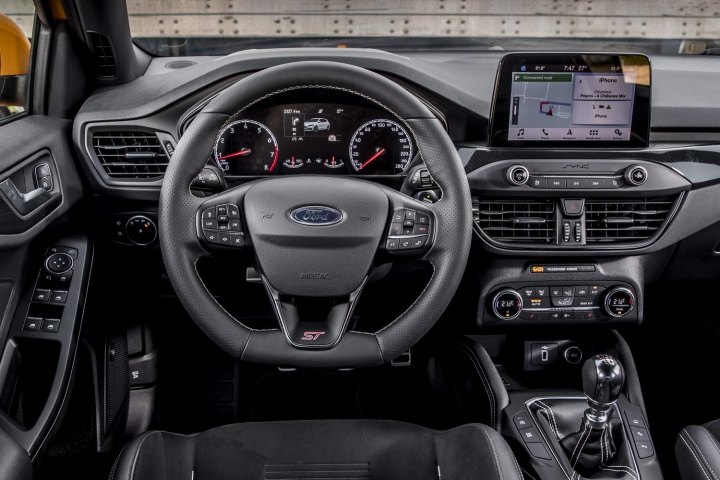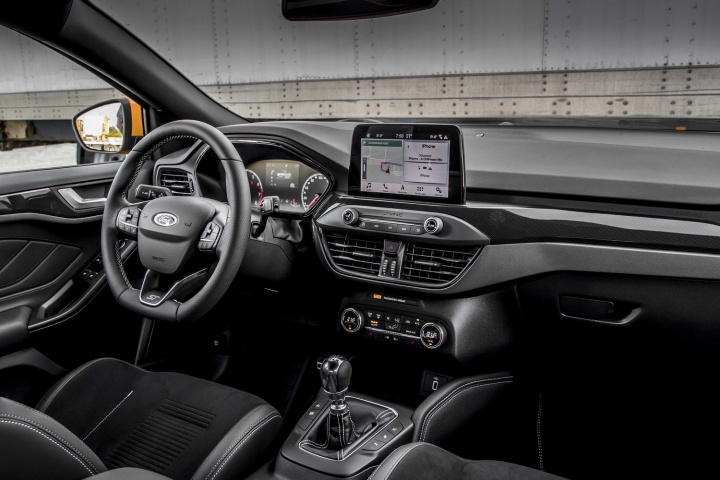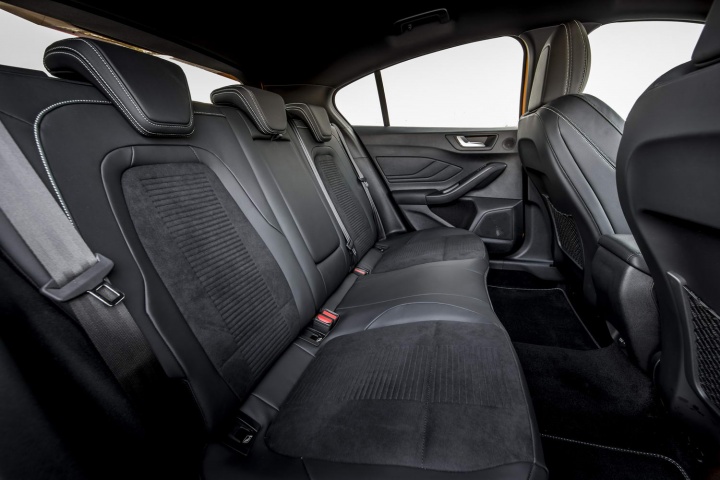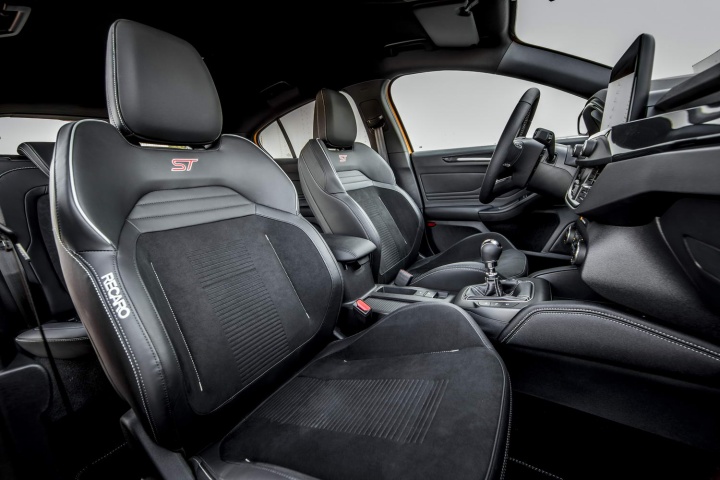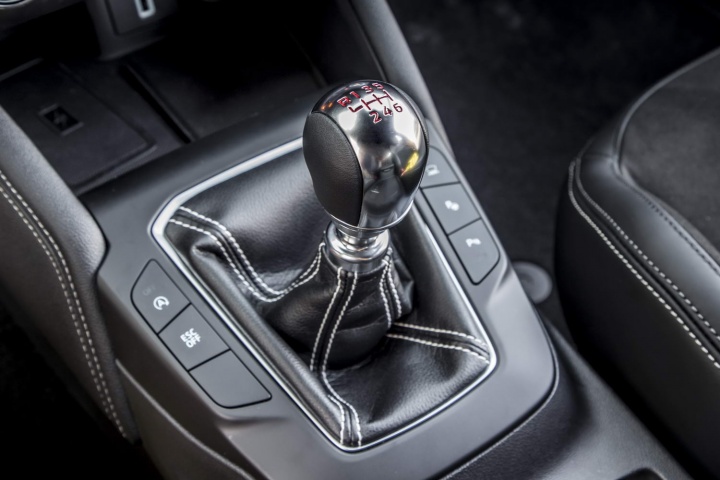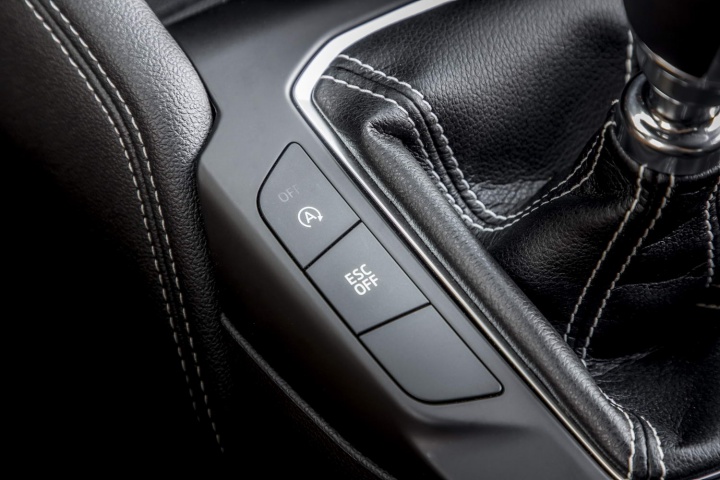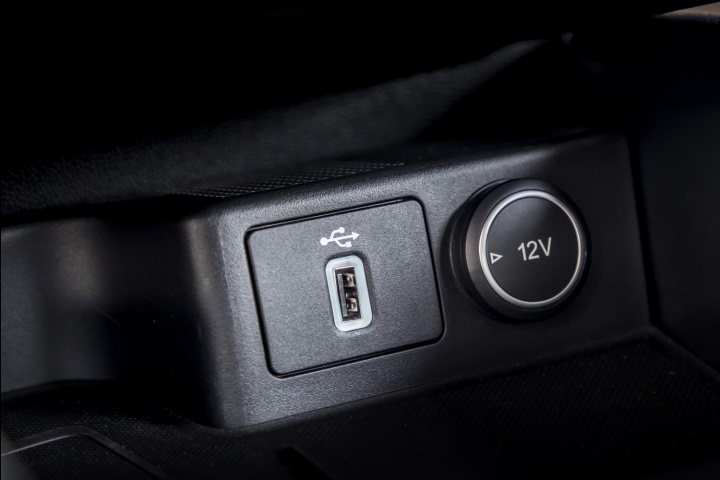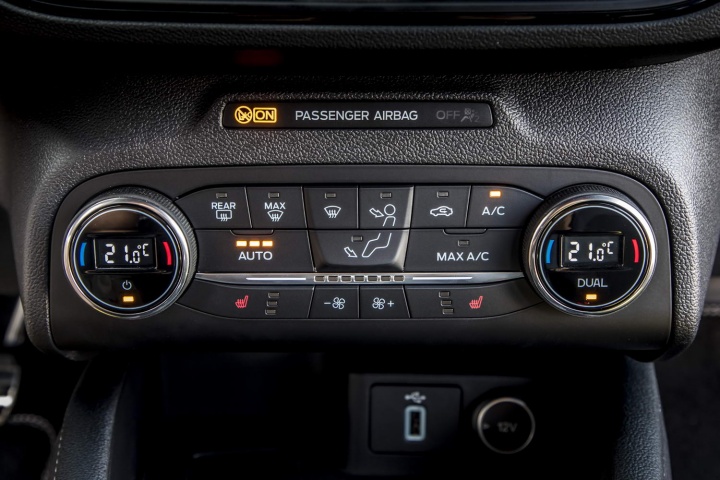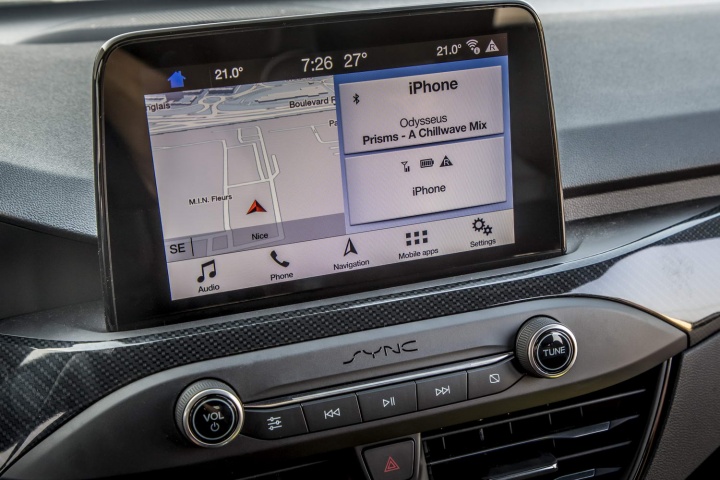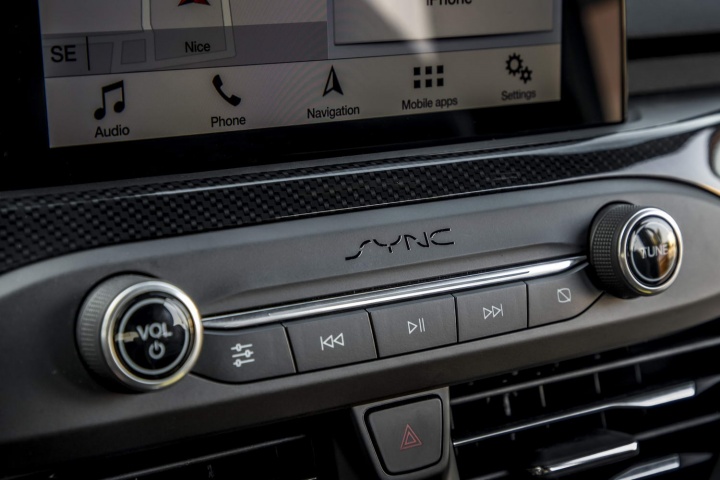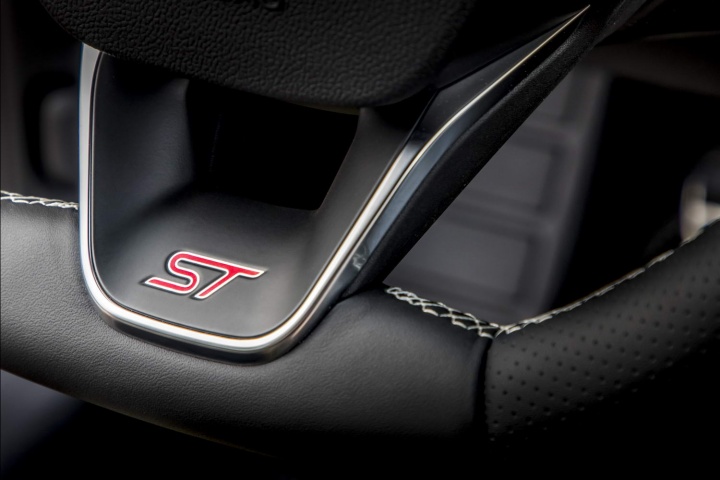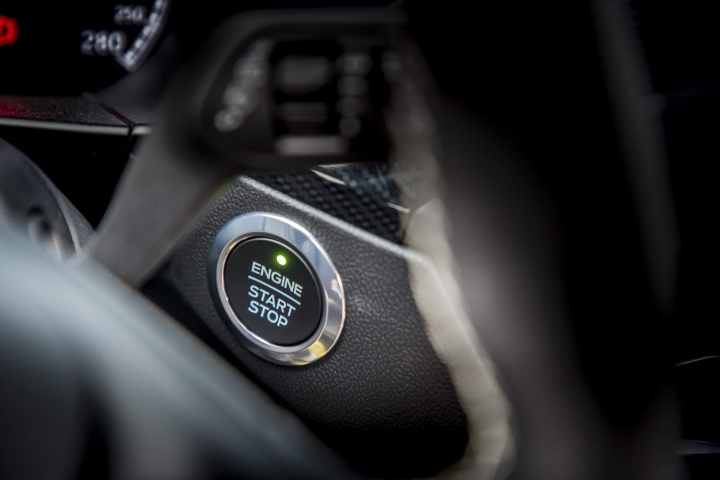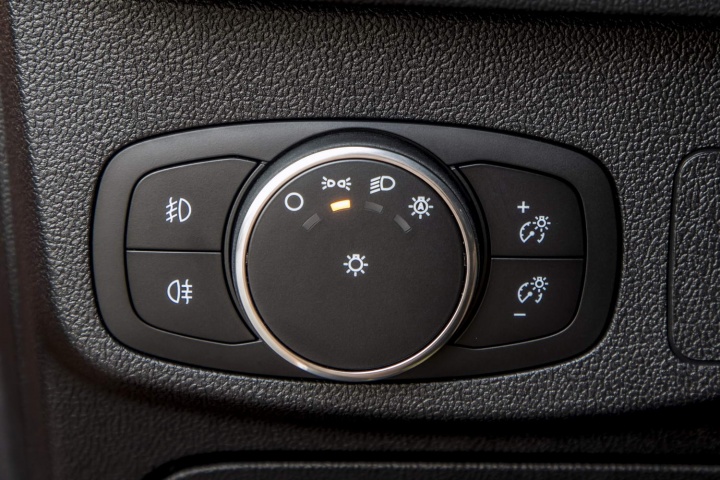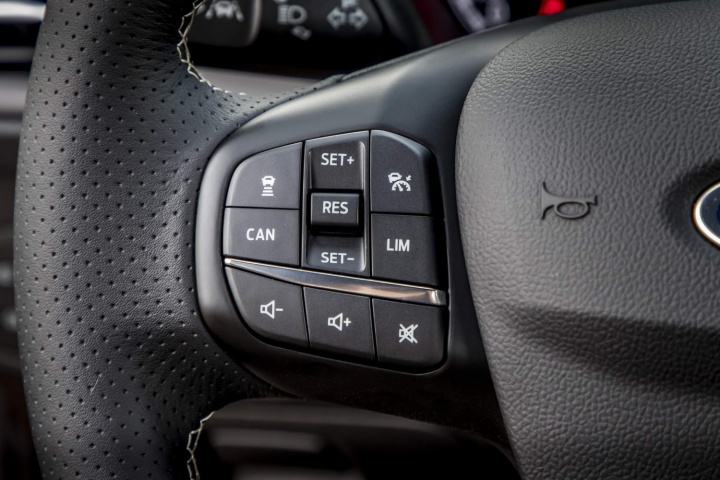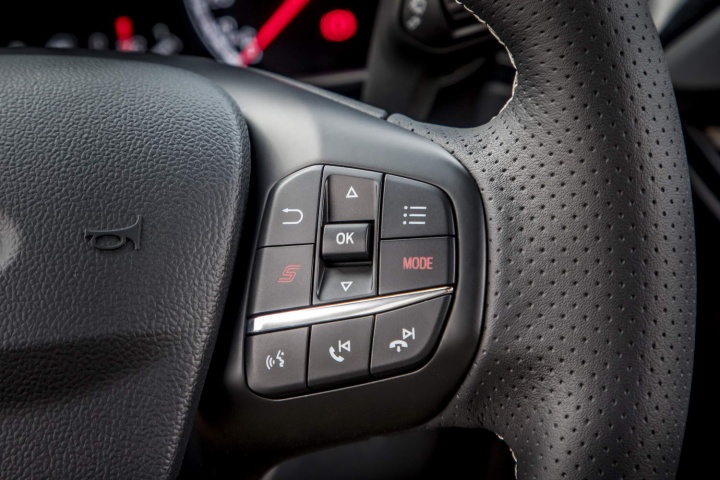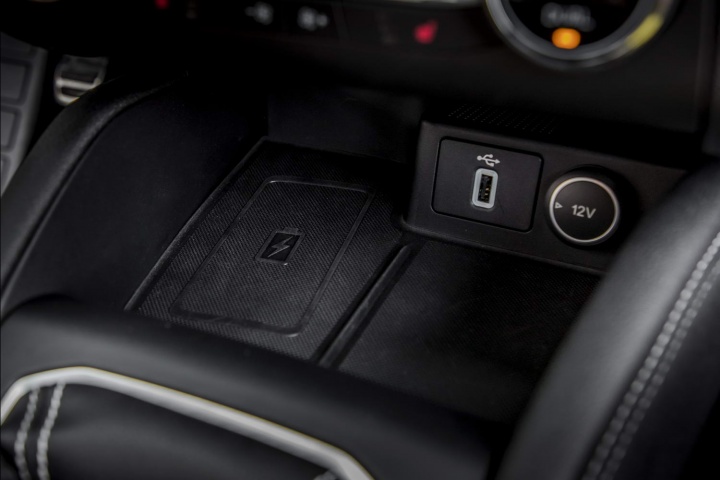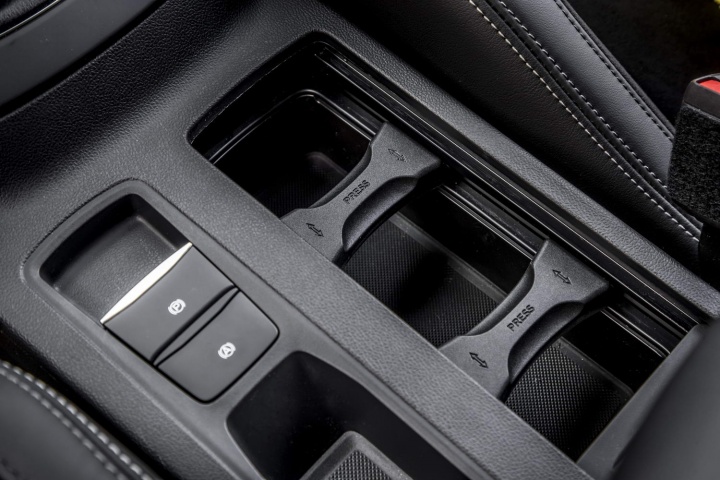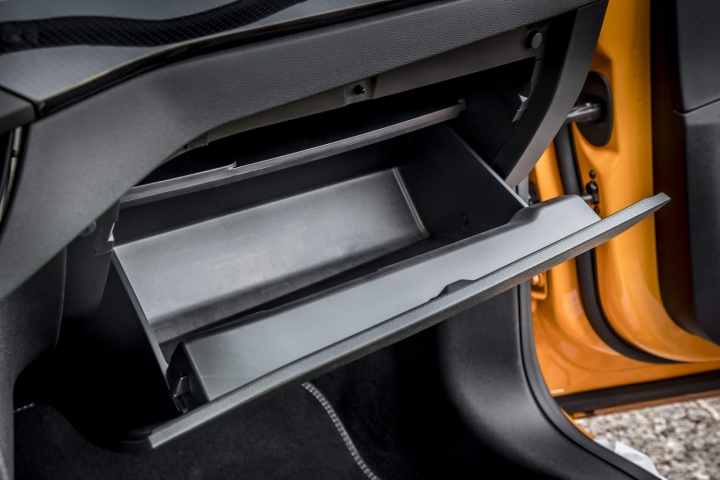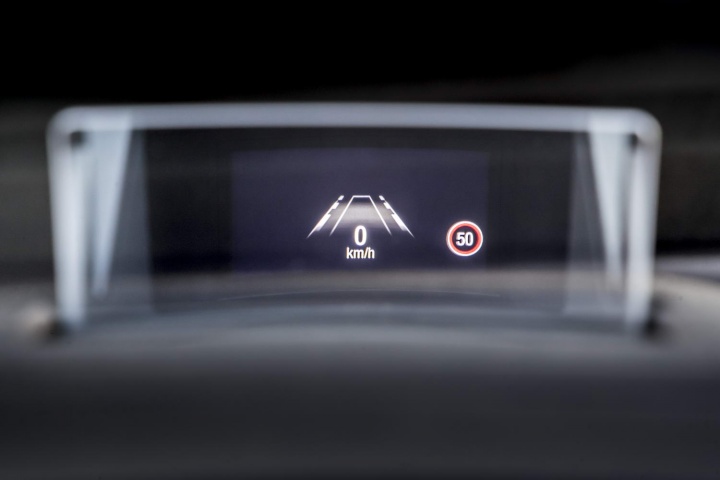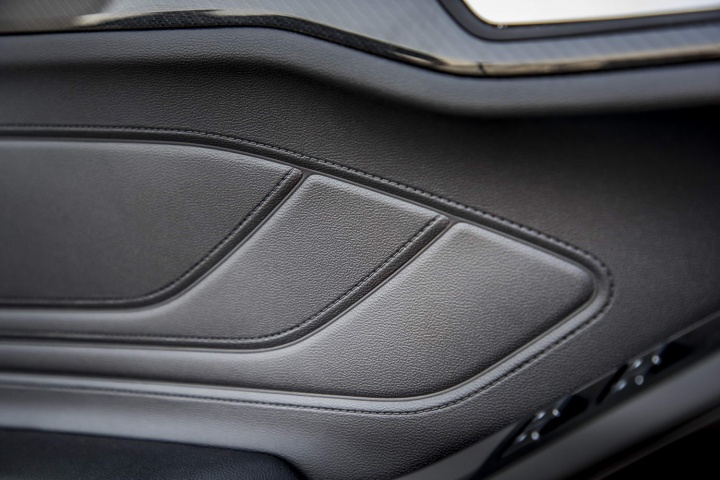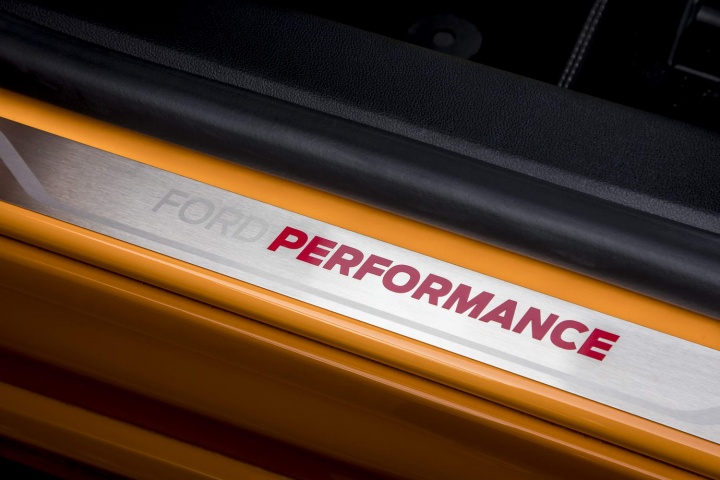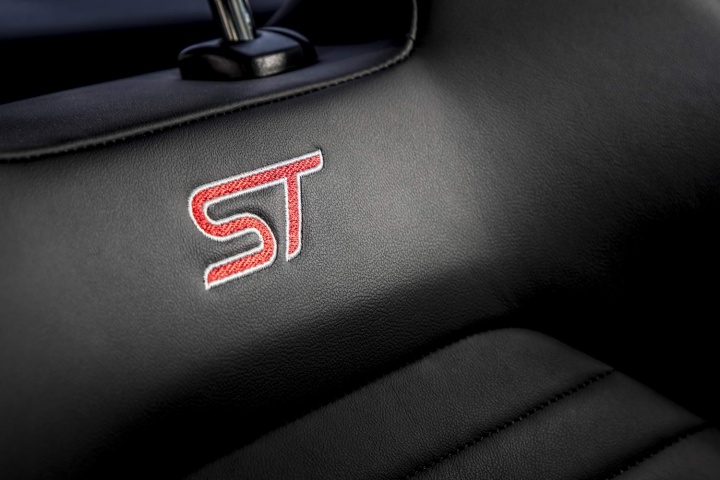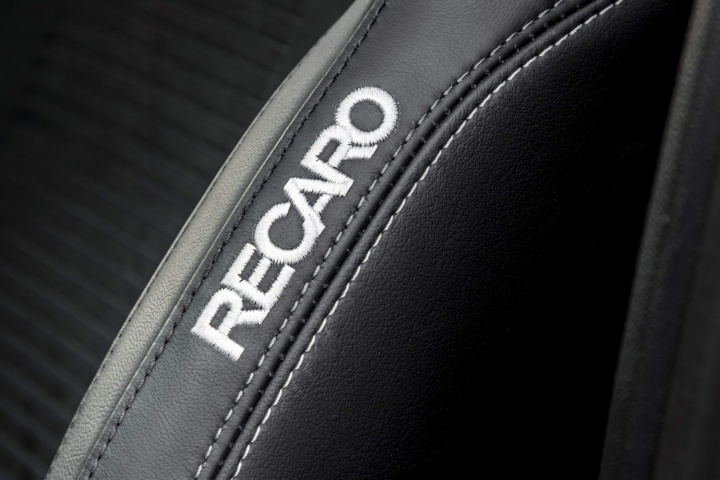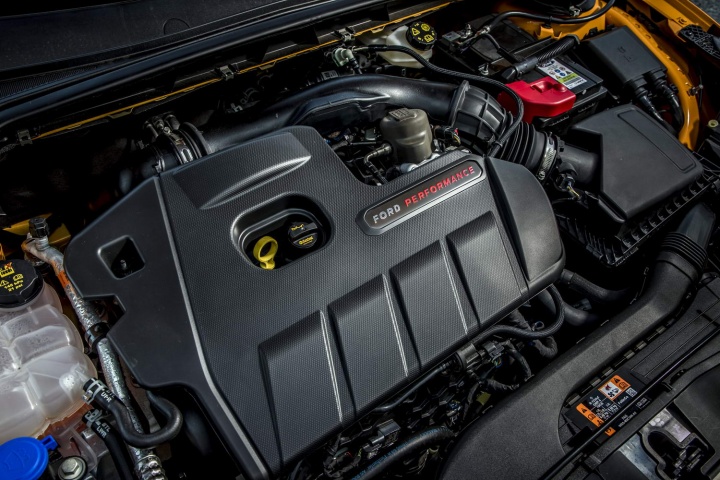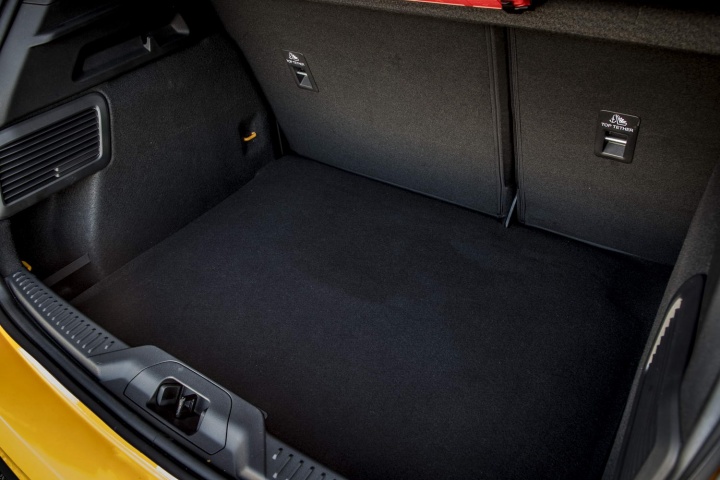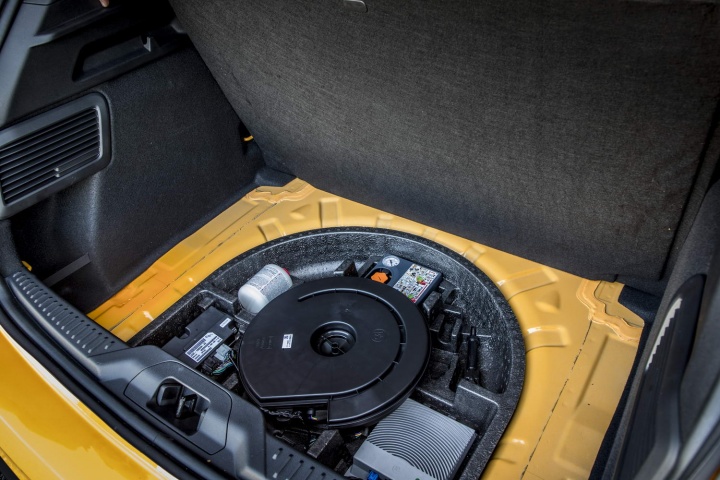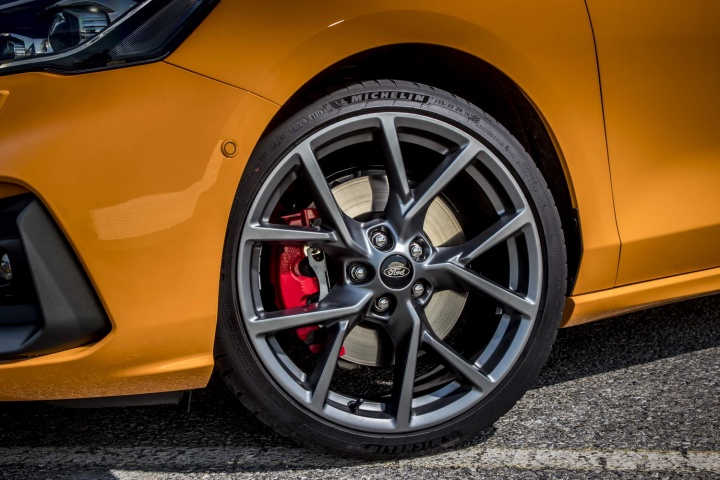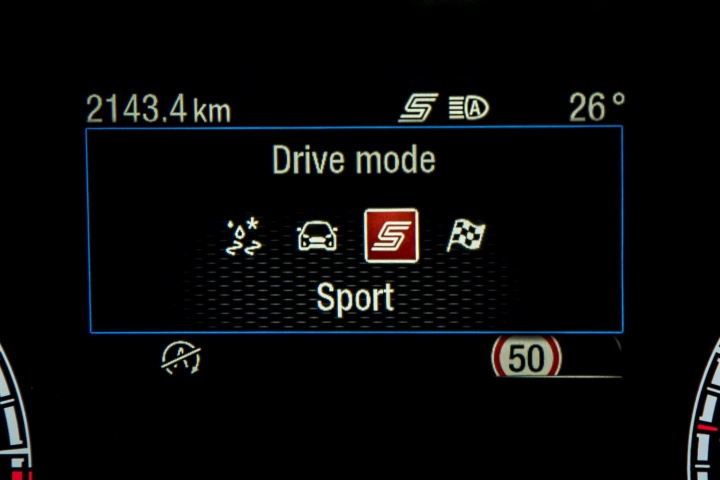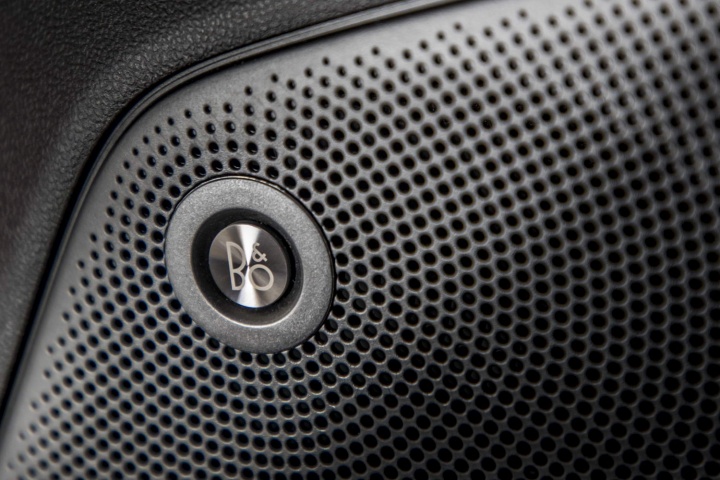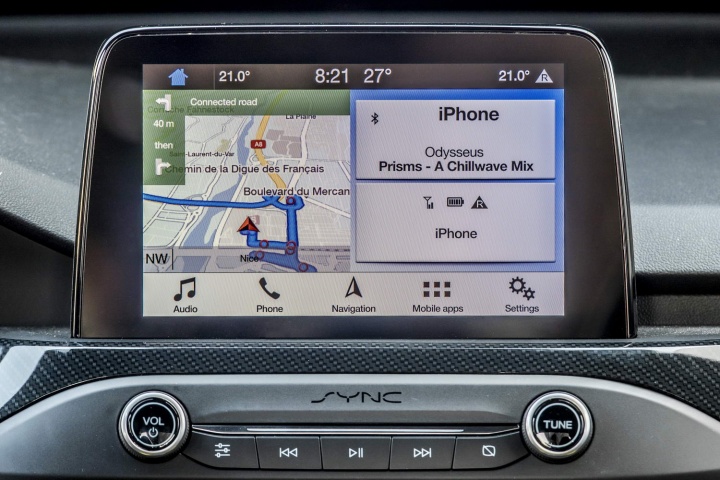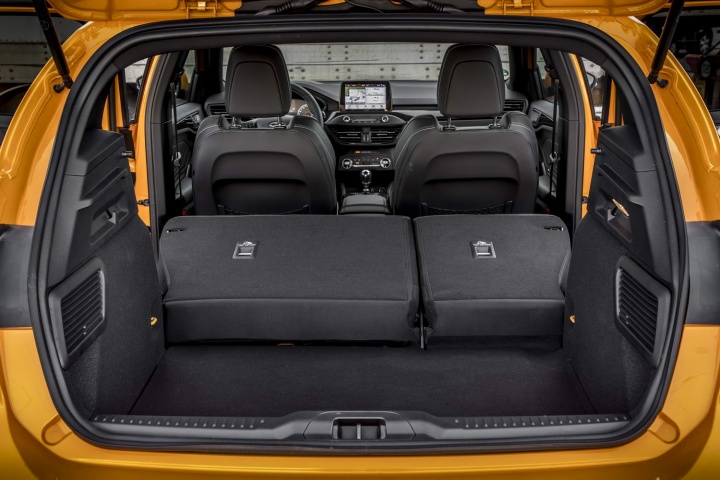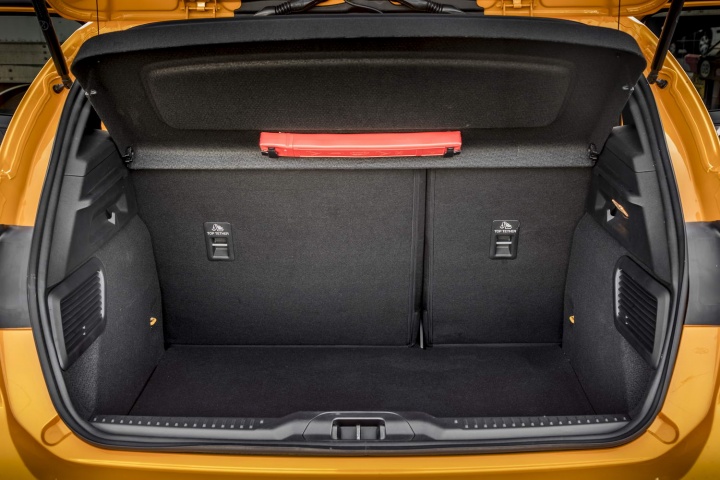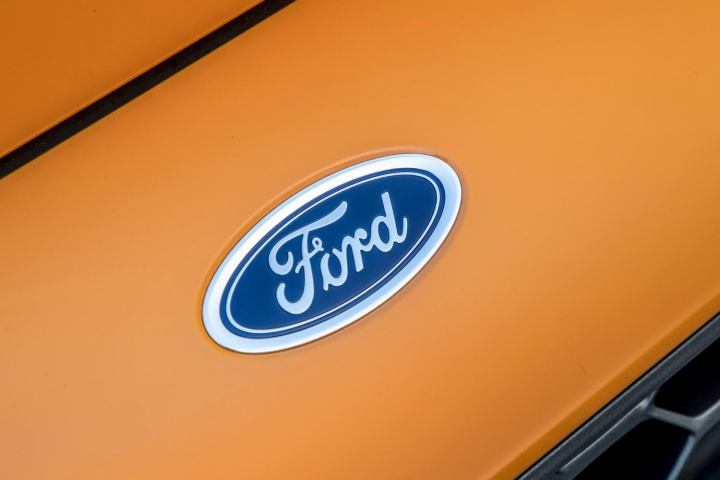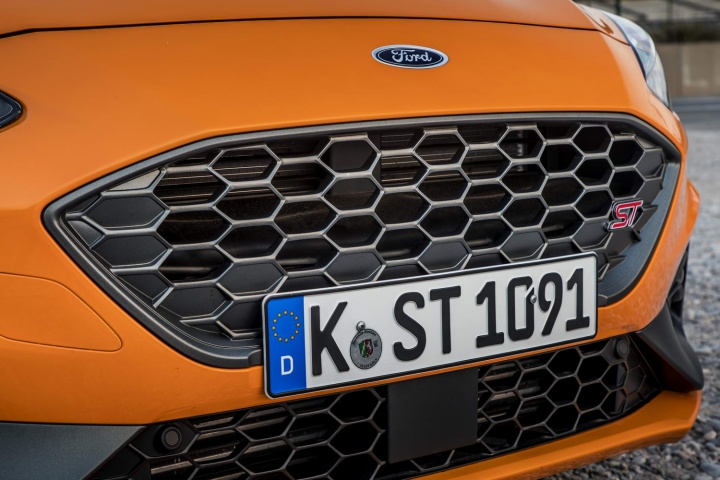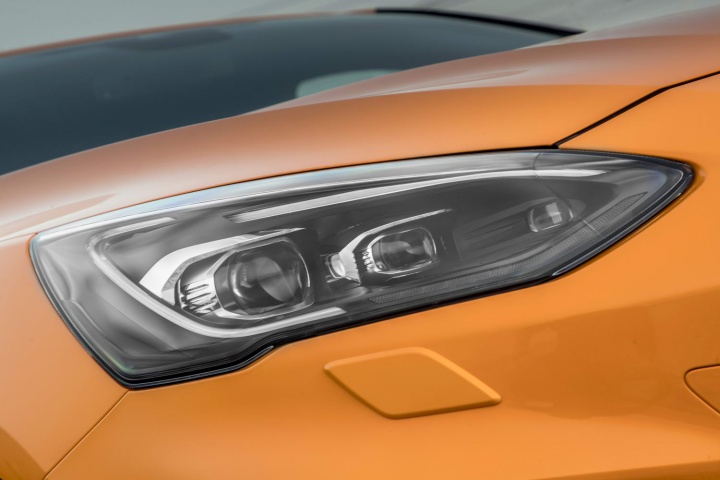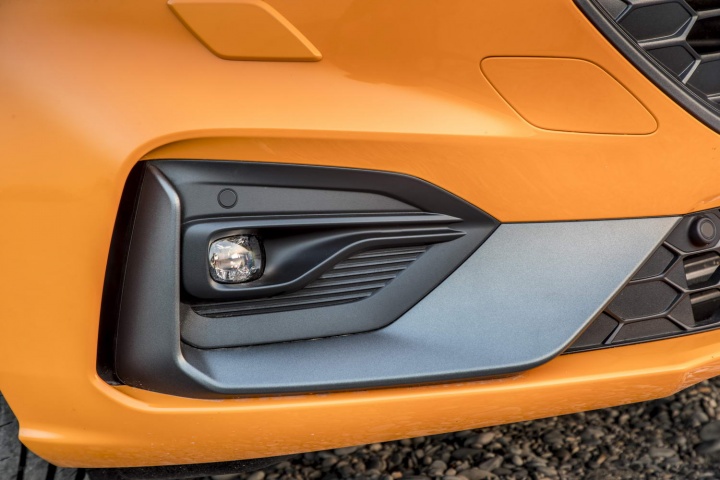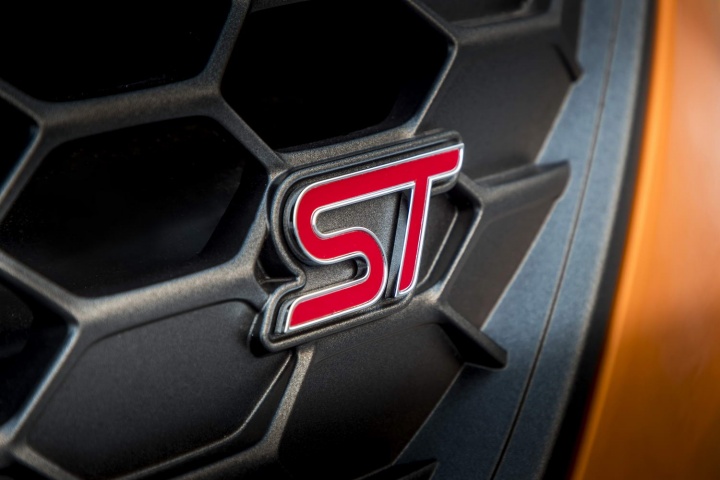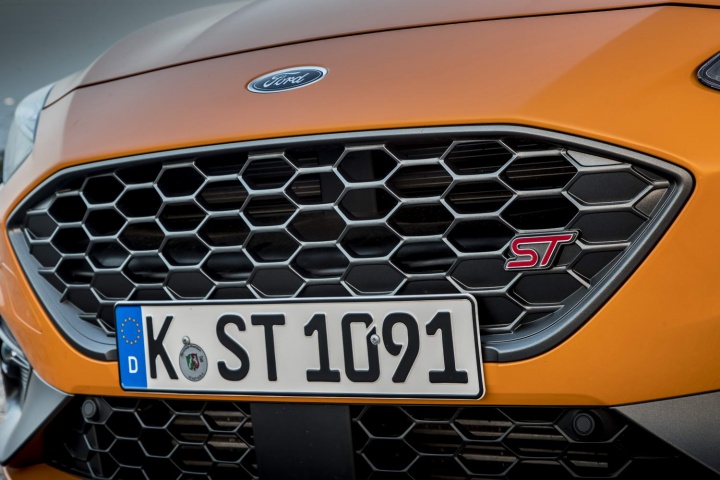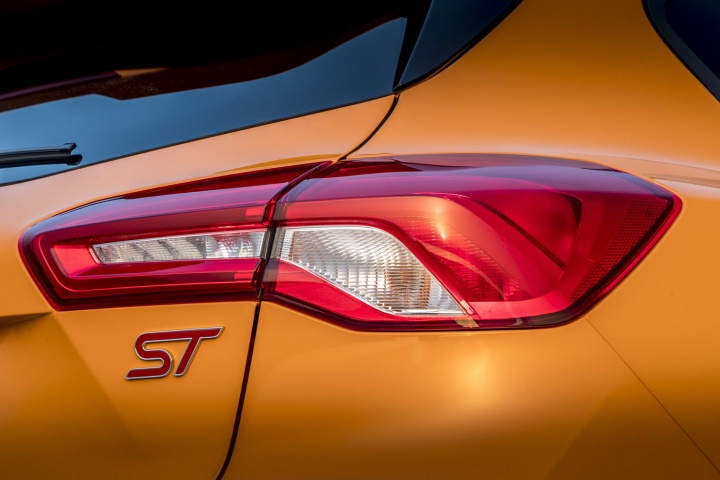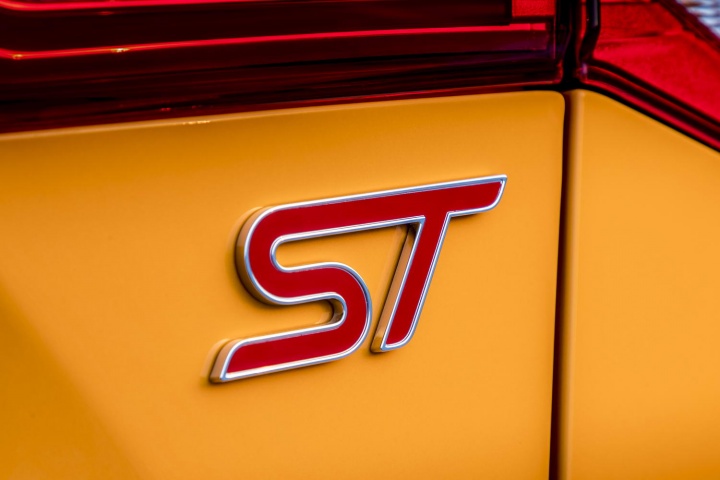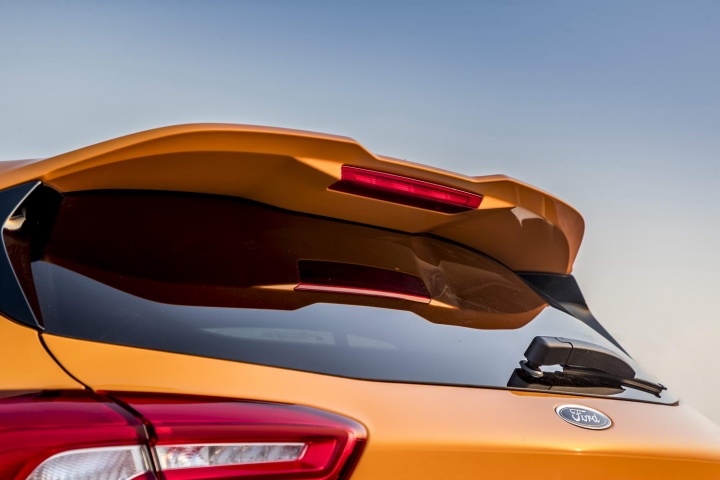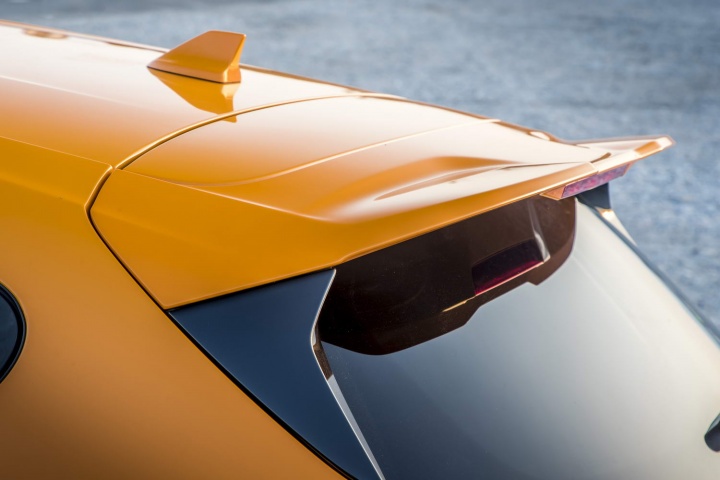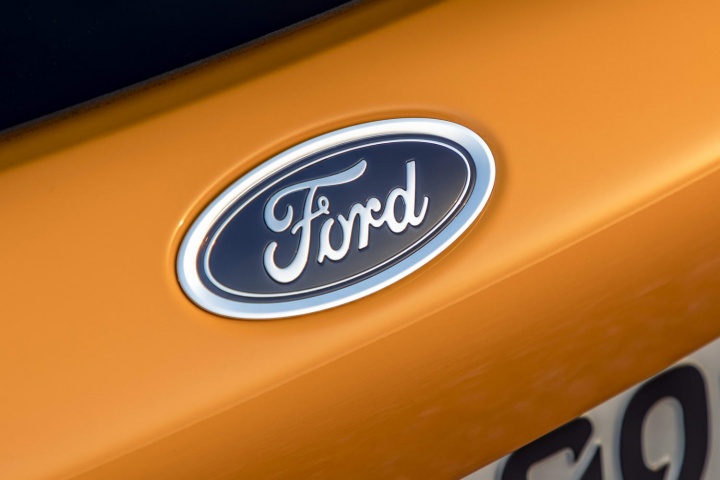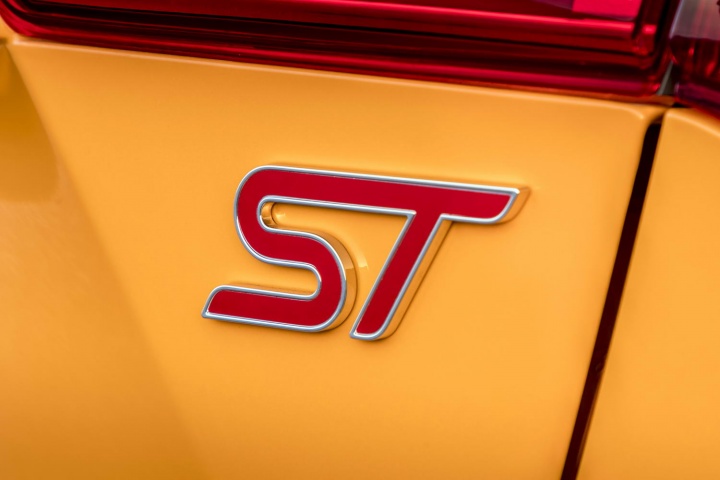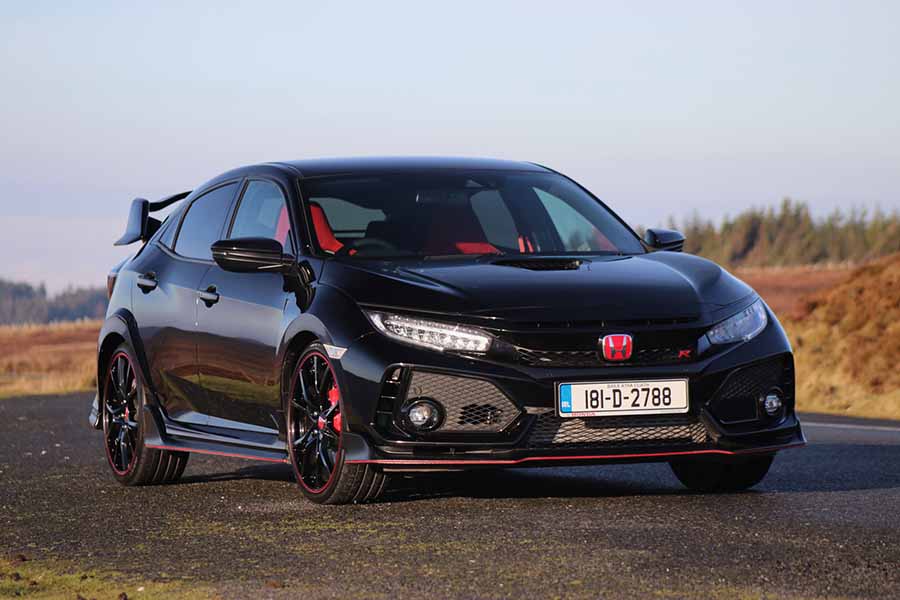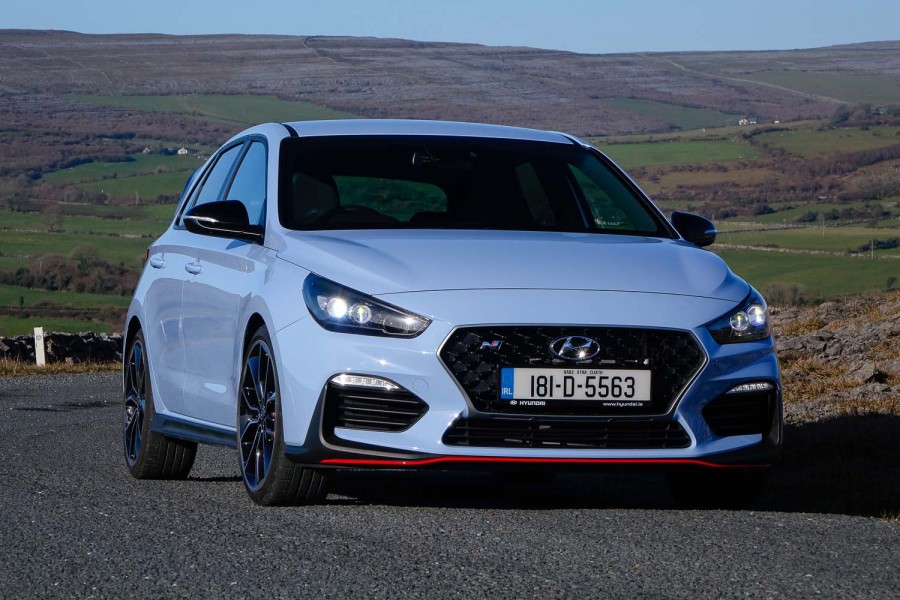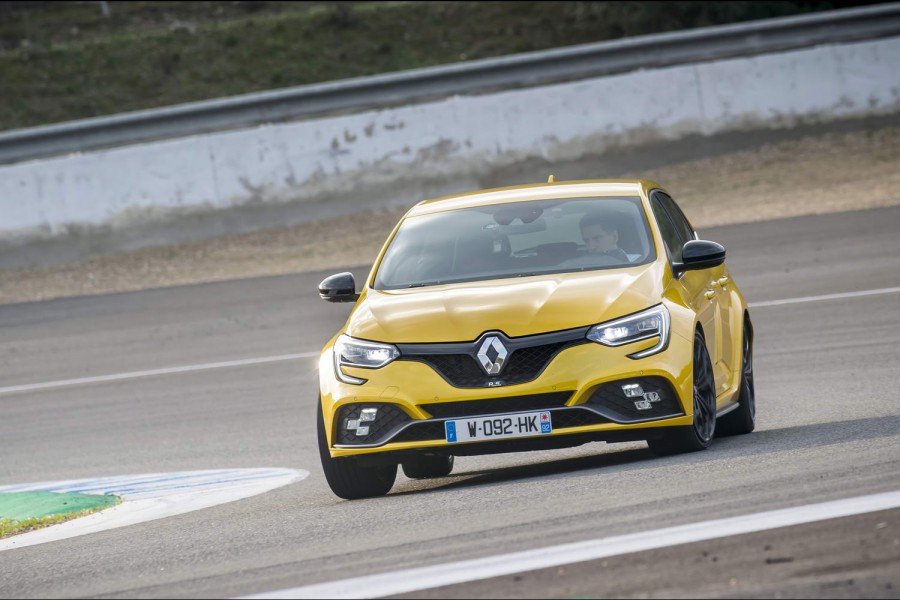Ford's second-tier performance Focus returns for a fourth outing, now using a 2.3-litre turbocharged four-cylinder engine that is related to those found in the Mustang and the old Focus RS. Ford Performance has worked its particular brand of magic on the Focus ST's underpinnings, but it now competes in a tougher C-segment hot hatch sector than ever - so can it win out against some deeply talented foes? And, more to the point, can it make us ignore the dazzling Fiesta ST lower down in Ford's own fast-car ranks?
In the metal
Visually, the Focus ST is quite underplayed. A four-strong launch line-up comprises two engines and two body styles, and you can combine them any way you like. So, there's a 190hp/400Nm 2.0-litre turbodiesel in the EcoBlue STs and then a 280hp/420Nm 2.3-litre four-cylinder EcoBoost in the petrol models. Choose from a hatchback or an Estate and you'll be offered a six-speed manual gearbox. Later in the year, a seven-speed automatic transmission will join the fold.
Anyway, doesn't matter whether you go for 190- or 280hp, or hatch or wagon, the Focus doesn't aesthetically scream for attention like, for instance, a Honda Civic Type R. Indeed, were it not for Orange Fury paint - orange long being a Focus ST trademark colour, as the Mk2 came in Electric Orange while the Mk3 enjoyed Tangerine Scream warpaint - then you might well mistake the full-fat 280hp range-topper (for now...) for nothing more than an ST-Line with a 1.0-litre EcoBoost three-cylinder engine. Which is not to say we dislike the way the ST looks, nor that going for the discreet look won't appeal to a lot of customers; positive features the ST sports are twin exhausts (spaced on the petrol cars, clustered to one side on the diesels, meaning you can now tow with a Focus ST when you couldn't before because of its centre-exits), a meaty roof spoiler, 19-inch Magnetite Matte alloy wheels, a honeycomb grille and dark grey exterior details, all of which give the Focus ST the right stance and understated menace. But there are still reserved-design hot hatches in this class that convey more of an air of being the true performance flagship, and not just a mimicking trim-line variant, than the Ford.
Same goes for the interior. It's nicely done - everything is solidly built and the Recaro seats are gorgeous to both behold and sit in, especially as they're mounted nice and low for an excellent driving position. Yet, beyond the ST-branded wheel, a shorter-throw (by seven per cent) manual gear lever with red numerals and some Ford Performance displays that can be called up in the little digital screen between the analogue dials, you'll be hard-pressed to remember you're in the ST when you're driving it. Said dials are rather plain, save for a 280km/h top-speed marker, while there's some questionable carbon-look trim in the dash and door cards. At least there's good space for adults in the back, as well as SYNC 3, Ford's vastly improved proprietary infotainment system.
Anyway, what we think we're trying to say is that the Ford Focus ST feels very mature outside and in; like maybe it's not the teenage tearaway it once was, instead having grown up into something more... sedate. Will such characteristics transfer into its driving manners?
Driving it
Let's make no mistake here; Ford Performance has thrown a lot of its enviable expertise at the Focus ST. And it is building on a good platform, as the regular Focus Mk4 drives rather sweetly in all the types we've tried so far. The standard independent rear suspension set-up and MacPherson strut leading axle of the Focus is bolstered with variable Continuously Controlled Damping, while a Borg-Warner electronically controlled limited-slip differential (eLSD) is added to the front of the car, where it can apportion up to 100 per cent of torque to either driven wheel to help cornering. The eLSD is abetted by Torque Vectoring Technology and 15 per cent quicker than a standard Focus' electric power assisted steering (EPAS), all of these three items actively seeking to pre-empt and prevent speed-sapping/handling-impairing wheelspin and torque-steer before they occur, rather than merely responding to these issues.
For stopping power, there are 330mm x 27mm front brake discs with twin-piston callipers, while the rear discs are 302mm x 11mm items - the whole system said to be four times more resistant to fade than the brakes on the previous-generation ST, thanks to an Electronic Brake Booster that improves the retardation. Then there's the powerplant. It's a 2.3-litre all-aluminium EcoBoost four-cylinder, augmented with an Engine Sound Enhancer and anti-lag functionality (in the top two of four drive modes in Performance Pack-equipped cars, Sport and Track) to ensure the twin-scroll turbo is always ready to deliver its goods. This four-cylinder unit is derived from the one found in other hot Fords of recent years but is said to be a 'new generation' engine. It certainly serves up the goods: 280hp might not be anything to shout about in a world where the Ford's front-wheel-drive rivals get up to the 320hp marker, but 420Nm is a whopping amount of grunt and so the Focus ST can claim a 5.7-second 0-100km/h time, a 250km/h top speed and - apparently - better in-gear acceleration times than the old four-wheel-drive, 350hp Focus RS.
However, Ford wants the ST to fill the duality of nature that these larger hot hatches must achieve these days. It can't just be a manic machine, rather like the more compact Fiesta ST; it has to function as a smooth family hatch for the times when mum or dad are not on their own in the Ford. This is a tricky balancing act to pull off and you can see all too easily how some rivals move closer to one end of the spectrum than the other: for instance, the outgoing Volkswagen Golf GTI, the related Skoda Octavia RS and the Peugeot 308 GTi would all be very easy to live with day-to-day, if not the most thrilling things to drive quickly; while the three main rivals we list below are thoroughly exciting to drive but can, sometimes, be a bit harsh to ride in (this is probably being a bit unfair on the Honda and somewhat kind to the Renault, mind).
Ford has kind of got the balance betwixt comfort and speed better than anyone, but there are some caveats. Or rather, there's one big caveat. You can cycle the car through Slippery, Normal, Sport and Track drive modes if you must, trying to find your preferred setting... or you can just let us tell you that the winner of these four, by absolute miles, is Normal. In Sport or Track, the Ford's damping simply becomes too recalcitrant and abrupt in its vertical movements, while the steering is... well... we wince when we say this, given we're fast Ford fans, but it's positively horrid. The aggressive self-centring of the Fiesta ST is carried over here but it is exacerbated in Sport and Track by the actions of the eLSD and the EPAS, the latter of which has unpleasant, spongy weighting and the propensity to throw in odd and unexpected shimmies of the wheel when you're least expecting it. On a super-smooth circuit, we have no doubt the Focus ST would feel epic in these two modes, but on bobbly roads, it just felt ill-resolved and hard to decipher what the car was doing through that steering.
Switch back to Normal mode, though, and the Focus is a revelation. The steering is by no means perfect in this setting and there are better set-ups available in rivals - the Ford still wants to self-centre so rapidly that it feels as if you're fighting with the wheel some of the time. However, while there's more slack in the system around the dead-ahead, the lighter weighting of Normal is far preferable to the stodginess of Sport or Track, allowing you to better feel what the front end is up to while simultaneously executing smoother inputs of lock. There's less action from the eLSD in this mode as well, which rather defeats the point of having it on the front axle in the first place, but the Ford is unquestionably nicer to power into and out of bends like this.
Because there's a gem of a 'plain' mechanical chassis here, no doubt about it. The front end of the Focus ST is nothing like as rabid to get into a corner as the Hyundai i30 N or the shark-like Civic Type R, but turn-in is plenty sharp enough and understeer is only provoked if you drive it really badly. The greatest thing about the Focus ST in Normal, though, is the damping; it has all the fluid and supple grace you'd expect of a fine Ford set-up, allowing the Focus to breathe with the road far more organically and giving the ST an elegance in the corners that is quite tremendous. We spent a while thinking we didn't like the Ford, because we were testing it in Sport and Track. Back in Normal, it made so much more sense and was, crucially, much more enjoyable.
There are plenty of other good things about the ST. Just pootling around, the ride is fantastic for a hot hatch on 19s and it's an easy car to drive in a smooth fashion at town pace. Nevertheless, get that 2.3-litre engine spinning and you'll be impressed with its mighty responsiveness and almost endless reach. This is an engine that feels almost atmospheric in its induction, unless you bog it right down in third. With big capacity and what must be a smaller, zippier turbo, that claim of the ST being faster in-gear than a Mk3 RS is not so hard to believe after all. Sure, the synthetic augmentation of the engine note is a bit much at the top end, while the exhaust is muted in its pops and bangs, but the soundtrack is decent and the performance is plenty strong enough - it's great that the Focus loves to rev right out, given its peak power output hits at a relatively lowly 5,500rpm.
We definitely like the Focus ST and we're keen to spend more time with it on our own roads to fully assess its capabilities, but the niggles about its drive modes are infuriating. Mainly because we felt like the Fiesta ST didn't do enough to differentiate between its three settings; Leo Roeks, Europe's director of Ford Performance, says this time the company has made sure there is a clear difference between Normal, Sport and Track. And there is; it's just that now, we'd advocate not bothering with the last two of these three because they're compromised on the road.
Linked to this, if there were an 'Individual' configurable mode for the steering, differential, engine and damping, which allowed various settings to be mixed and matched, that would improve things no end - and yet Roeks said they didn't bother adding it in because owners use such a feature once and then never touch it again. Nor is there a way to turn off rev-matching, which is annoying and linked to emissions regulations, although the height of the brake pedal makes heel-and-toe tricky to execute well in the Focus anyway.
What you get for your money
Ford Ireland has done a better job of pricing the Focus ST than in some markets, where it's as expensive as a Civic Type R. Here, it has been confirmed that the ST range will start from less than €40,000, but that's for the diesel hatchback; the petrol models begin at a whisker beyond €41,000. It's around €1,100 to go from a hatchback to its equivalent Estate version, while the seven-speed automatic gearbox can be fitted to the petrol models only for a €2,040 premium. Ford will offer its hot Focus in ST-2 and ST-3 trims, the former gaining 18-inch wheels, parking sensors all round, the CCD suspension (on the petrol models, only), auto lights and wipers, SYNC 3 infotainment with FordPass Connect, dual-zone climate control and partial-leather Recaro seats. ST-3, from €44,754 for this manual hatchback, adds full LED headlamps, painted brake callipers, 19-inch alloys, a rear-view camera and full leather (and heated and electrically adjustable front) seats. This latter spec is the one closest to the Civic Type R in equipment, so you're looking at around a €7,000 gap between the two as standard.
Summary
Look, let's be clear - the new Focus ST is a cracking C-segment hot hatch. It has a monster engine, a great chassis and the ability to be really, really quick across ground... provided that ground isn't too rough, and you have it in the only setting (Normal) where it works like a dream. Sadly, the somewhat disappointing manners of the car in Sport and Track settings and the lack of any configurability to the drive modes means it's not a class-leader. And even with those things in play, we still reckon the Honda and Hyundai rivals are the more exciting and desirable vehicles, the i30 being conspicuously cheaper than the Ford. Looks like it will be down to the Focus RS Mk4, then, to see if Ford can clamber back on top of the C-segment hot hatch pile once more.

